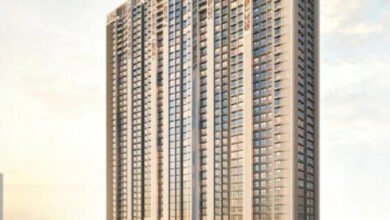Everything You Need to Know About Semi Dry Screed in Dorset

When it comes to creating a solid and level base for flooring, semi dry screed is a go-to choice for many builders and homeowners in Dorset. Its unique properties make it suitable for a wide range of applications, from residential homes to commercial and industrial settings. This guide will provide you with all the information you need to know about semi dry screed Dorset, covering its benefits, applications, and the best practices for installation and maintenance.
What is Semi Dry Screed?
Understanding what semi dry screed is and how it functions is essential for making informed decisions about your flooring projects.
1. Definition of Semi Dry Screed
- Semi dry screed is a mixture of sand, cement, and a minimal amount of water. The mix is carefully balanced to create a damp, crumbly consistency that can be easily spread and compacted to form a strong, level surface. This type of screed is typically used as a base layer for various types of flooring, including tiles, wood, laminate, and carpet.
2. How Semi Dry Screed Differs from Other Screeds
- Traditional Sand and Cement Screed: Traditional screed is similar to semi dry screed but contains more water, making it wetter and heavier. This can lead to longer drying times and a higher risk of shrinkage and cracking.
- Liquid Screed (Flowing Screed): Liquid screed is a more fluid mixture that is poured and self-levels. While it provides a very smooth finish, it requires specialized equipment and more careful handling compared to semi dry screed.
- Polymer-Modified Screed: This screed includes additives that enhance its flexibility and strength, making it ideal for high-traffic areas. However, semi dry screed is preferred for its ease of use and reliability in many standard applications.
The Benefits of Using Semi Dry Screed in Dorset
There are several reasons why semi dry screed is a popular choice for flooring projects in Dorset. Here are the top benefits:
1. Durability and Strength
One of the most significant advantages of semi dry screed is its durability, which is essential for creating a long-lasting floor.
- High Compressive Strength: Semi dry screed has a high compressive strength, meaning it can withstand heavy loads without cracking or deteriorating. This makes it suitable for both residential and commercial settings, including areas with heavy foot traffic or heavy furniture and equipment.
- Reduced Risk of Cracking: The drier consistency of semi dry screed reduces the risk of shrinkage as the screed cures, which in turn minimizes the chances of cracking. This ensures a more stable and durable floor over time.
2. Versatility in Application
Semi dry screed is highly versatile, making it suitable for a wide range of flooring applications.
- Compatible with Various Floor Finishes: Whether you’re planning to install tiles, wood, laminate, or carpet, semi dry screed provides a smooth, even surface that is compatible with all types of flooring.
- Suitable for Different Environments: Semi dry screed can be used in residential, commercial, and industrial environments. Its strength and moisture resistance make it particularly suitable for kitchens, bathrooms, living rooms, basements, and even garages.
3. Efficient Installation Process
The installation process for semi dry screed is efficient, making it a preferred choice for contractors and homeowners alike.
- Quick Drying Time: Semi dry screed dries faster than traditional screeds, allowing for quicker project completion. This is especially beneficial in commercial projects where time constraints are critical.
- Ease of Application: The crumbly consistency of semi dry screed makes it easy to handle and apply, reducing the likelihood of errors during installation and ensuring a high-quality finish.
- Minimal Waste and Cleanup: The drier mix results in less mess on the job site, reducing waste and simplifying cleanup, which contributes to a more efficient overall process.
4. Cost-Effectiveness
Cost-effectiveness is a significant consideration in any construction project, and semi dry screed offers excellent value for money.
- Lower Material Costs: The materials used in semi dry screed are generally less expensive than those required for liquid screeds, making it a cost-effective option for large-scale projects.
- Reduced Labour Costs: The ease of application and quicker drying time mean that less labour is required, further reducing the overall cost of the project.
- Long-Term Savings: The durability and longevity of semi dry screed translate into long-term savings, as there is less need for repairs and maintenance over the lifespan of the floor.
5. Environmental Benefits
Sustainability is an increasingly important consideration in construction, and semi dry screed offers several environmental advantages.
- Reduced Water Usage: Semi dry screed uses less water than traditional screeds, conserving this valuable resource and reducing the environmental impact of the project.
- Lower Carbon Footprint: The production and transportation of materials for semi dry screed generally result in a lower carbon footprint compared to other types of screed.
- Recyclable Materials: Many of the components used in semi dry screed are recyclable, contributing to a more sustainable construction process.
6. Precision and Control
Achieving a perfectly level and even floor is crucial for the final finish, and semi dry screed excels in this area.
- Manual Application for Better Control: Since semi dry screed is applied manually, installers have better control over the distribution and thickness of the screed, ensuring a perfectly level surface.
- Customizable Thickness: The thickness of the screed can be adjusted to meet the specific requirements of your project, providing flexibility and precision.
- Consistent Finish: The consistency of the mix ensures a uniform finish across the entire floor area, reducing the likelihood of imperfections.
Common Applications of Semi Dry Screed in Dorset
Semi dry screed is suitable for a wide range of applications, making it a versatile choice for various construction projects in Dorset.
1. Residential Flooring
In residential settings, semi dry screed is commonly used for:
- Living Rooms and Bedrooms: Providing a strong, level base for carpet, wood, or laminate flooring.
- Kitchens and Bathrooms: Offering moisture resistance and compatibility with underfloor heating systems, making it ideal for areas prone to humidity and temperature changes.
- Garages and Basements: Withstanding heavy loads and providing durability in areas exposed to high traffic and moisture.
2. Commercial Applications
For commercial projects, semi dry screed is ideal for:
- Retail Spaces: Ensuring a smooth, durable surface that can handle high foot traffic and heavy displays.
- Office Buildings: Providing a stable base for a variety of floor finishes, including carpet tiles and vinyl.
- Warehouses and Industrial Facilities: Offering the strength needed to support heavy machinery and equipment.
3. Public and Institutional Buildings
In public buildings such as schools, hospitals, and government facilities, semi dry screed is used for:
- Corridors and Lobbies: Providing a durable, even surface that can handle large volumes of foot traffic.
- Classrooms and Offices: Ensuring a level base for different types of flooring materials, from tiles to carpet.
- Restrooms and Locker Rooms: Offering moisture resistance and compatibility with slip-resistant flooring finishes.
The Installation Process for Semi Dry Screed
To ensure the success of your project, it’s important to understand the key steps involved in the installation of semi dry screed Dorset.
1. Preparation of the Substrate
Proper preparation of the substrate is crucial for ensuring the quality and durability of the screed.
- Cleaning and Levelling: The substrate must be clean, free of dust, and level. Any debris or uneven surfaces should be addressed before screeding begins.
- Priming the Substrate: In some cases, a primer may be applied to the substrate to improve the adhesion of the screed.
2. Mixing the Screed
The correct mixing of materials is crucial for achieving the right consistency and strength.
- Proportioning the Mix: The screed is mixed in a precise ratio of sand, cement, and water. The mix should be consistent throughout to ensure uniform strength.
- Achieving the Right Consistency: The mix should be semi-dry, meaning it should hold together when compacted but not be too wet. This consistency is essential for the screed’s performance.
3. Laying the Screed
The application of the screed requires skill and precision to achieve a level surface.
- Spreading the Screed: The screed is spread evenly across the substrate using a screeding bar or similar tool. It should be applied in a continuous process to avoid seams or joints.
- Levelling and Compacting: The screed is levelled and compacted to ensure a smooth, even surface. This step is critical for the final quality of the floor.




